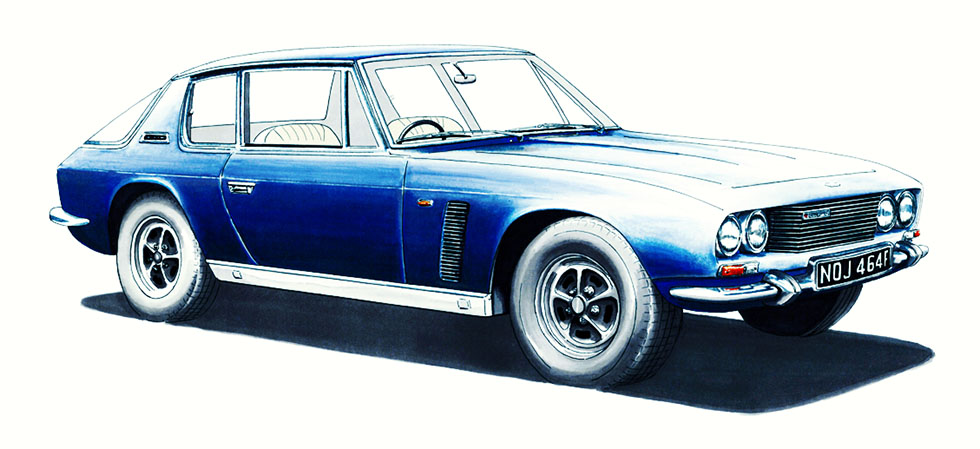
Although Jensen has had more twists and turns than a Hollywood movie, it still survives and a new model is due. It’s best remembered for the muscle-bound V8-powered Interceptor but this former West Midlands maker produced an interesting variety of specialised vehicles ranging from trucks to exotic sports cars and even Volvos. Words: Iain Wakefield.
Despite the original Jensen Motors Ltd. going out of business in 1976, this highly respected automotive name has refused to fade away as over the years various plans to revive the marque have come and gone. Although there are several companies currently rebuilding V8-powered Interceptors as well as providing a virtually endless list of new spare parts, an all-new Jensen-badged sports car appears to be in the design stage as earlier this year a venture calling itself the Jensen Group announced it would be launching a brand new ‘supercar’ costing over £350,000 next year along with a Series 2 Interceptor.
Like many of the UK’s specialist vehicle manufactures formed in the interwar years, the Jensen marque has enjoyed – or suffered – a chequered history since its creation back in 1934 when brothers Alan and Richard Jensen took control of W.J. Smith, a long established commercial coachbuilder based in the High Street, West Bromwich. Alan and Richard Jensen were well qualified for their new roles as Richard was the most artistic of the pair and had commenced his working life as an apprentice at Wolseley. Alan on the other hand worked in the drawing office at Serck Radiators and the pair’s passion for building motorcars was ignited when a friend turned up at the Jensen family home with a self-built special.
Keen to do better, Richard and Alan’s father bought his sons a 1923 Austin Chummy and the young petrol heads quickly stripped the Austin down and set about building a stylish two-seat sports body to fit the bare chassis. The talented Jensen brothers drove their new creation to a hillclimb at nearby Shelsey Walsh where their re-bodied Austin caught the attention of one Arthur Wilde, chief engineer at the Standard Motor Company. Impressed by the sporting lines of the little Austin, Wilde invited the Jensen brothers to carry out a similar exercise based on a Standard Nine chassis.
The result found favour with the motoring press of the day and as an almost direct consequence Alan Jensen was offered a job at New Avon Body Company, a firm specialising in producing small runs of bespoke designed coachwork. Part of Alan Jensen’s brief on joining Avon was to produce a production version of the re-bodied Standard Nine and his Avon Standard became the first in a series of cars produced by the young Jensen and Avon.
Meanwhile, Richard Jensen had left Wolseley to take up a position at Joseph Lucas but it wouldn’t be long before the two brothers were working together after they joined Edgbaston Garages, a company specialising in car maintenance and allied trades. Alan and Richard Jensen worked hard to totally transform the company’s operations by developing several profitable sidelines and the enterprising pair was soon asked to join the board of directors. Edgbaston Garages went on to become Patrick Motors and in 1931 Alan and Richard Jensen left to join W.J. Smith as joint managing directors. After the death of the company owner William Smith, the hardworking Jensen brothers bought a controlling shareholding of Smiths and went on to change the firm’s name to Jensen Motors Limited.
At the time the company specialised in building bespoke bodies on chassis supplied by a number of local manufacturers including Singer, Morris, Standard and Wolseley. Smiths had already built a small number of two- and four-seat tourers known as the Jensen Wolseley Hornet and the same year the Jensen brothers changed the company’s name, the well-known film star Clark Gable commissioned the firm to build a one-off lightweight two-seater based on a Ford V8-powered chassis.
The result was a resounding success and the stylish design led to a deal with the Blue Oval board to produce a limited run of Jensen-bodied Fords. In 1934 the Jensen brothers started to design their first car under the name of the White Lady, a prototype that eventually went into production the following year as the 3.5-litre Jensen S-type. The company started to diversify into the production of lightweight commercial vehicles under the JNSN marque in the late 1930s and went on to build a number of stylish trucks and buses. During WWII Jensen Motors turned its extensive manufacturing facilities over to building tank turrets alongside specialised vehicles such as ambulances and fire engines as well as converting US-built Sherman tanks for amphibious use.
Jensen Motors resumed private car production in 1946 with the Meadows-powered Jensen PW, the same year the former Wolseley body designer Eric Neale joined the company. The commercial vehicle side of the Jensen Motors received a profitable boost during the late 1940s with the introduction of the Jen-Tug, an all aluminium bodied, three-ton articulated lorry powered by a 1.5-litre Austin A50 engine. An electric powered version called the Jen-Helec was introduced a short while afterwards and both these tractor units featured a unique Jensen patented trailer coupling operated from the cab.
The iconic Jensen Interceptor name was introduced for the first time in 1950 with the launch of a stylish coupé and three years later the glass-fibre bodied Jensen 541 made an appearance. Designed by Eric Neale, the sleek looking 541 utilised a host of Austin parts and had a selling price of £2346. In 1956 Jensen Motors moved to a purpose built factory at Kelvin Way in West Bromwich. As well as building the 541 at its new premises, Jensen was now building bodies for other manufacturers including the Austin A40 sports, Austin Healey 100 and Austin Gipsy and the company would go on to manufacture the P1800 for Volvo and supply bodies to Rootes for its Sunbeam Tiger drophead.
In the late ’50s Jensen Motors was taken over by the Norcross Group, a move that eventually led to a certain amount of friction between the new owners and the two Jensen brothers. In October 1962 the Jensen C-V8 replaced the Jensen 541, the new model being identified by its four chrome ringed slanted headlights and bulging bonnet line. The mainly glass-fibre bodied CV8 coupé – both the doors were skinned with aluminium – was powered by a Chrysler V8 engine and at the time the car was regarded as one of the fastest production four-seaters of its era with a top speed approaching 130mph.
The 330bhp MkII CV8 incorporating a few subtle changes appeared a year later and in 1965 a restyled and more powerful MkIII version hit the showrooms. Between 1962 and 1965, a prototype four-wheel drive CV8 designated the FF was developed at West Bromwich in conjunction with tractor manufacturer Harry Ferguson. Unfortunately this advanced system didn’t make it into full time production on the CV8 due to the imminent arrival of the new Carrozzeria Touringstyled Interceptor.
The 1966 launched Interceptor would go on to be the best known Jensen of all as its placement in a number of popular TV programmes, such as Jason King and a later series of The Saint, would help promote the Interceptor’s executive image as a prestige grand tourer. Like its predecessor, this Italian-styled GT was powered by a 6276cc V8 Chrysler engine and in 1966 the new Interceptor was voted Car of the Year. Despite the new car’s success, the Jenson brothers were becoming increasingly concerned about the direction the company was taking and later that year the enterprising pair announced their retirement from the firm that still carried the family name.
By the late ’60s things were starting to slowly unravel at Jensen Motors following the loss of a lucrative contract to build Austin-Healey bodies following the demise of the MkIII Healey 3000, while Volvo P1800 production had moved back to Sweden in 1963. The contract with BMC had been a major source of income for Jensen and as demand for independent automotive body construction was in decline, Jensen Motors found itself approaching a financial black hole. However, help was to come from an odd direction as Donald Healey was planning a replacement and approached Jensen to help design a new mid-market sports car that would sit between the E-type Jaguar and Triumph TR6.
Financial backing for the project that would eventually produce the Jensen-Healey came from Kjell Qvale, owner of the largest Austin Healey dealership in the USA. The investment made Qvale the majority shareholder at Jensen Motors and Donald Healey was appointed chairman of the refinanced company. The new Jensen-Healey sports car was a joint venture between Healey senior, his son Donald and stylist Hugo Poole and the finished design was later fine tuned by William Towns so the new sports car would be compliant with recently introduced US Federal safety laws. Launched in 1972, the Jensen-Healey convertible was powered by an all-alloy 144bhp, 16-valve 2.0-litre Lotus engine, which helped create the car’s 50/50 weight distribution and provided predictable and safe handling.
Unfortunately, a few period road testers considered the basic design of the early Jensen- Healey to be flawed and build quality left a lot to be desired. Despite a steady number of improvements helping to enhance the Jensen- Healey’s showroom appeal, Donald Healey wasn’t happy with the situation and resigned from Jensen Motors in 1973.
Although several exclusive upmarket versions of the Interceptor continued to be well received on both side of the Atlantic, especially the stylish convertible and high performance examples of the 1967 launched all-wheel drive FF, the financial situation at Jensen Motors continued to nose dive. In 1976 receivers were called in to the West Bromwich factory and what remained of Jensen Motors was acquired by Britcar Holdings and split in two parts: Jensen Special Products Ltd., and Jensen Parts and Services Ltd. The first part of the venture sadly failed after an unsuccessful management buyout but Jensen Parts and Services became a profitable company in its own right, renovating Jensen cars and importing Subaru and Hyundai vehicles. In 1982 Ian Orford, a former employee, purchased the rights to the Jensen marque and after taking control of the business, changed its name to Jensen Cars.
Using the original jigs and spare components, Orford’s company unveiled a new Series four Interceptor at the Birmingham Motor Fair in 1983, but only a handful of these cars were ever built. Unicorn Holdings went on to purchase the struggling business in 1988 and after a receiver had been appointed in 1993, the factory at Kelvin Way was closed and put up for sale. The following April Martin Robey, the Nuneaton-based Jaguar body spares manufacturer, purchased the Jensen design rights along with all the tooling, stock of parts and copyrights. Now part of Martin Robey Sales Limited, the Jensen and Jensen Healey works parts department is able to supply an impressive amount of new old stock items for a number of Jensen models as well as remanufacturing parts and panels using all the original tooling.
“Unfortunately, a few period road testers considered the basic design of the early Jensen-Healey to be flawed”
Creative Designs of Reddich tried to revive the Jensen marque with the S-V8, a model the company launched at the 1998 British International Motor Show. Although a few S-V8’s were built at a new factory in Speke near Liverpool, the project sadly ground to a halt by 2002 and one again the receivers were called in. Partly built cars and the Jensen marque were subsequently sold to Oxfordshire-based SV Automotive in 2003 and this operation built a dozen S-V8’s and retained the remainder for spares. Like a phoenix rising from the ashes, Jensen International Automotive (JIA) was formed in 2010 and this company started to purchase used Interceptors and sell them as ‘new’ cars after completing an extensive restoration that included installing a reconditioned engine and fitting a new interior.
In 2011 Coventry Prototype Panels (CPP) announced plans to build a brand new Interceptor in conjunction with Healey Sports Car Switzerland Ltd, the then owners of the Jensen marque, with a proposal to have the new car ready for sale by 2014. With this project either delayed or abandoned, a new company called ‘The Jensen Group’ made an announcement back in February this year, reporting it’s currently designing a £350,000 Jensen GT in collaboration with JIA and is planning to unveil the car in 2016. Just like the original CV8 and Interceptor, the performance figures for the new Jensen GT look awesome as its 6.4-litre supercharged V8 has been rated at being able to push out 665bhp. If this GT ever sees the light of day, it will be the first all new Jensen-badged sports car since 2002 and it will continue the famous marque first started by the talented Jensen brothers just over 80 years ago.
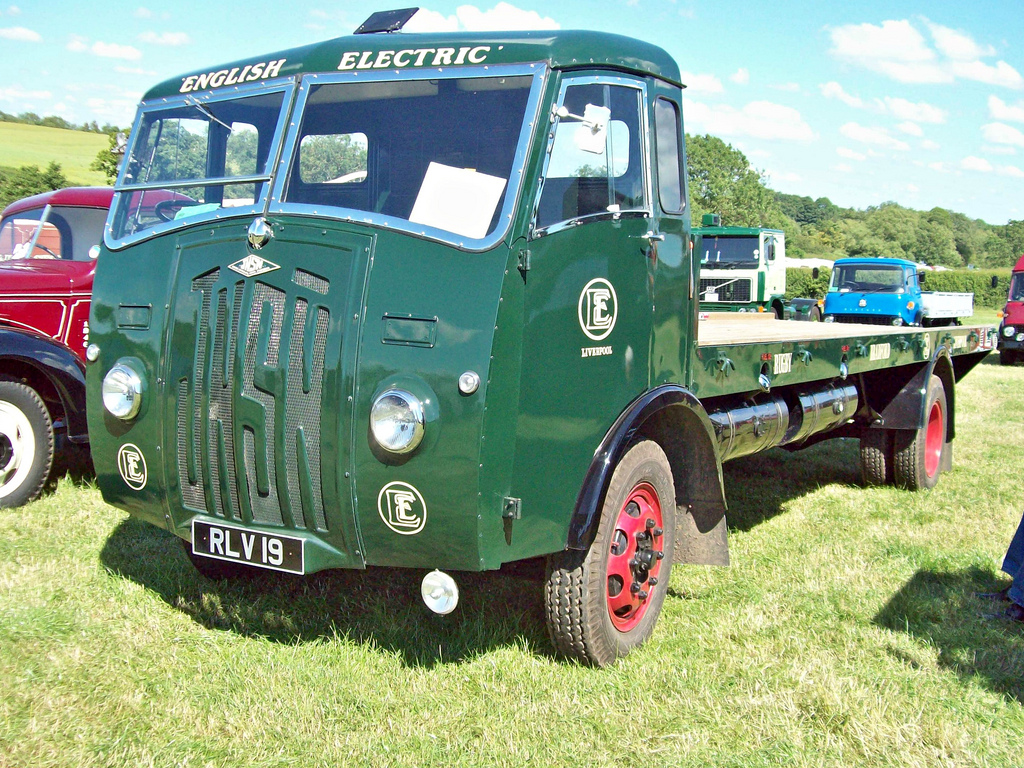
Top right: Jensen’s ‘JNSN’ truck brand was common in the ’30s. The fibreglass-bodied 541 (above left) appeared in 1953 powered by a straight-six Austin engine and was replaced in 1963 by the Chrysler V8-powered CV8 (above right), at the time one of the world’s fastest production four-seaters.
“This Italian-styled GT was powered by a 6276cc V8 Chrysler engine and in 1966 the new Interceptor was voted Car of the Year”
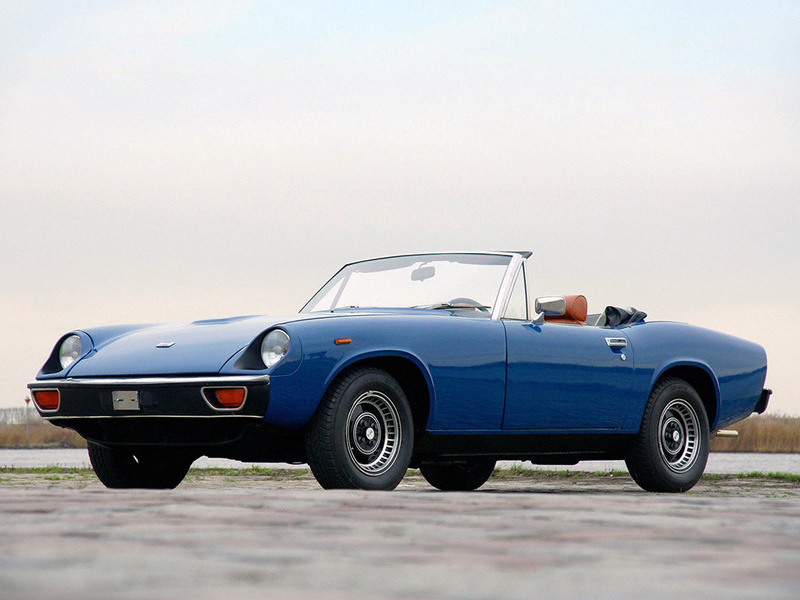
The Jensen-Healey was also offered as a practical GT. The Jensen-Healey could have saved the firm but lack of development and reliability issues with the Lotus engine hit its success in the market.
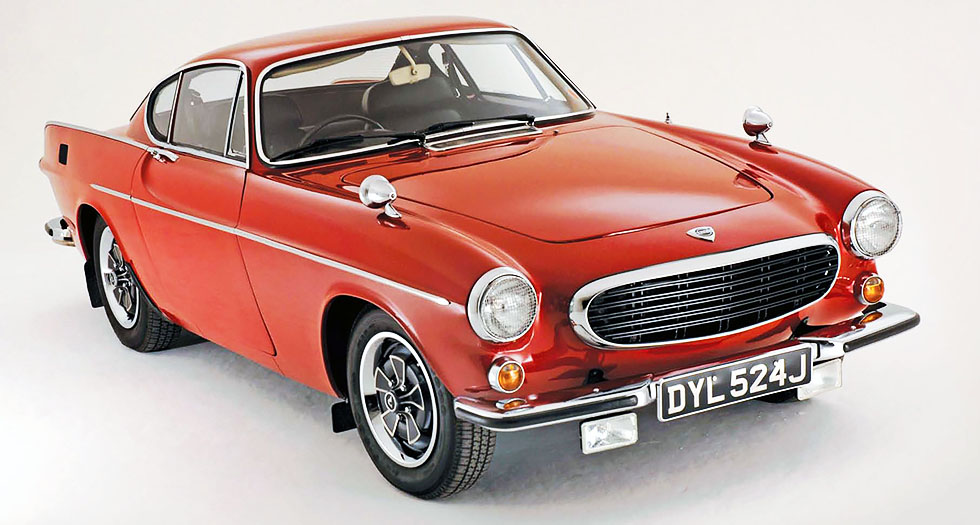
With its own plants at capacity, Volvo turned to Jensen to assemble the first 10,000 P1800s.
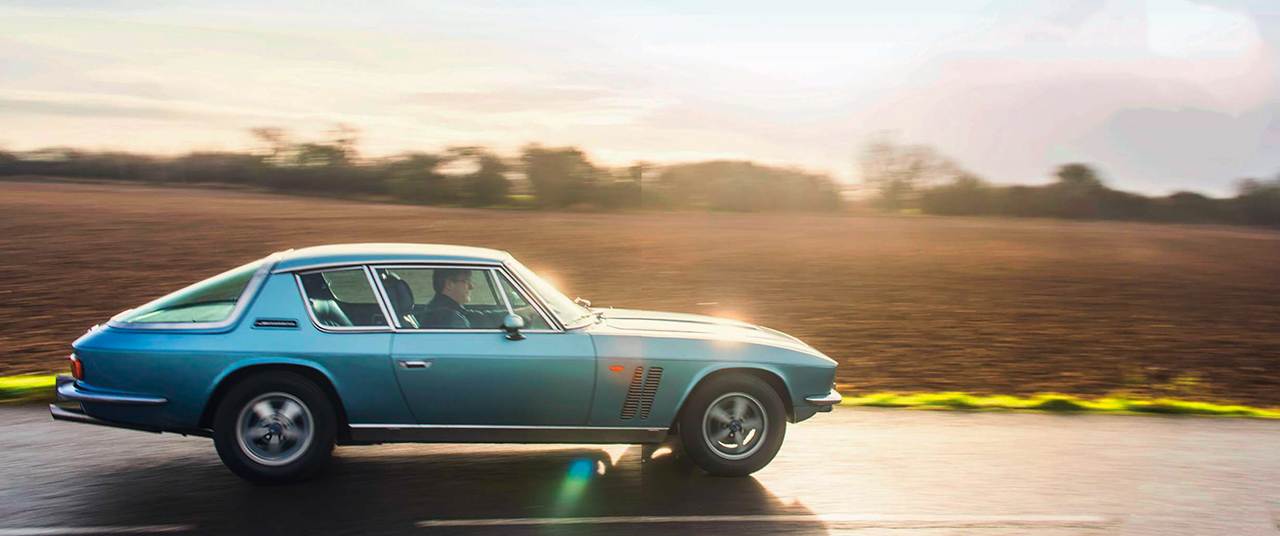
The Ferguson 4×4 system was developed for the CV8 but first made production in the Interceptor FF.
Links: Jensen Interceptor MkIII Convertible 7.2 road test / Jensen Interceptor and FF Club





